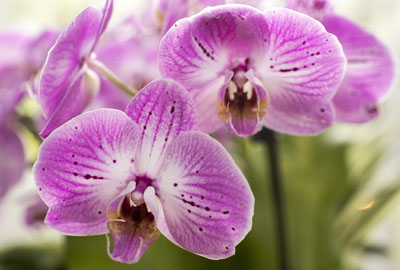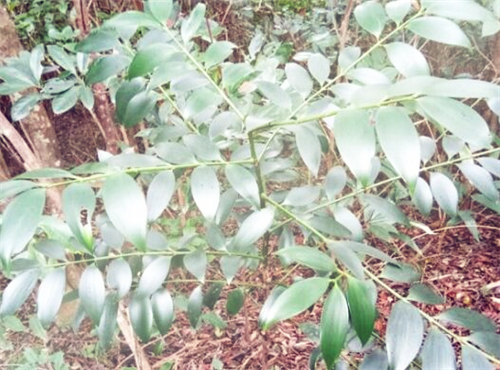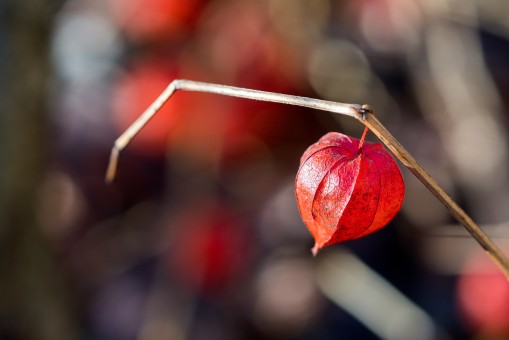Can the herbaceous Phalaenopsis be hydroponically cultivated? How do you raise it? After the flower fades, how to make it blossom again?
Phalaenopsis, also known as Phalaenopsis, is a common perennial herb in China's subtropical rain forest. It is deeply loved by people because its flowers are like butterflies. Many people like to raise them indoors to improve their indoor effect. Can Phalaenopsis be hydroponically cultivated? How do you raise it? After the flower fades, how to make it blossom again?

It can be hydroponically cultured, and like green pineapple, it is easy to breed. The specific methods are as follows:
1. Wash the roots
Clean the roots of Phalaenopsis with clean water, wash off some old and rotten roots, and spray or soak the roots with disinfectant if allowed, to prevent some residual bacteria from infecting other healthy roots. The sterilized plants are set aside to dry.
2. Select utensils
Phalaenopsis sprouts quickly during the growing period, so the best time for water culture is in April. In order to raise the washed Phalaenopsis water in the selected utensils, it is best to choose transparent glassware to cultivate, which can not only observe the growth of Phalaenopsis roots at any time, but also increase the light transmittance and accelerate the growth of roots. Make the roots look better.
3. Fixed plant
When you put the dried plant into a prepared container, you will encounter a situation where the plant cannot be fixed. What should you do? What are the countermeasures?
(1) if the size of Phalaenopsis matches the proportion of utensils, there is no need to take other fixing measures, because the leaves of Phalaenopsis have sufficient support capacity.
(2) if Phalaenopsis plants are much smaller than utensils, it is necessary to fix the plants with the help of other things. you can choose a planting basket suitable for the specifications of the utensils in the shop, or you can use small tools at home to fix them, such as iron wire or bamboo branches. choose branches of appropriate thickness to circle and weave upward from the root of the plant, and then hook and fix them on the mouth of the utensils, and the surrounding route will be more casual. There is no specific method of wrapping.
4. Pay attention
(1) temperature. The temperature is relatively low in winter, so it is necessary to control the humidity in the air. If the roots of the plant have grown in the water, it is easy to have rotten roots at low temperatures.
(2) cleaning up. After keeping the water for a period of time, you will find moss growing on the walls and roots of the utensils, so clean it regularly.
The method of secondary flowering:
Treatment: 1. Pruning the flower stem
The main results are as follows: (1) when the self-cultivated butterfly orchid has withered, the flower stem of the butterfly orchid can be pruned from 4 to 5 nodes from the base.
(2) after cutting, continue to cultivate butterfly orchids. After a few months of cultivation, butterfly orchids can continue to bloom.
(3) maintain soil moisture.
One of the advantages and disadvantages: the butterfly orchid is pruned so that the butterfly orchid can blossom twice a year, but the disadvantage is that it will cause damage to the butterfly orchid as a whole. It is possible that the flowering of Phalaenopsis will weaken a lot next year.
2. Pruning the base
(1) pruning the base of the flower stem of the butterfly orchid.
(2) after pruning, the culture was carried out according to the normal culture mode.
(3) to ensure the degree of soil moisture and prevent stagnant water.
Time: 2019-04-08 Click:
- Prev

How much is the market price of gymnosperms, bamboo and cypress? Why is it so expensive? Can I put it in the bedroom? How do you raise it?
Bamboo and cypress, also known as Luohanchai I and coconut, is a common gymnosperm in Guangdong, Guangxi, Sichuan, Hunan and other places. It is widely cultivated because of its effects of air purification, mosquito repellent and anti-pollution.
- Next

Is it feasible for perennial herbs to be planted in rural areas? What are the values? When will it be ready? When?
Lantern grass, also known as sour pulp, ghost lantern, bitter lantern, is a common perennial herb in most parts of our country. It is widely cultivated because of its high medicinal value. Is it feasible to plant lantern grass in rural areas? What are the values? When will it be ready? When will it be harvested
Related
- Fuxing push coffee new agricultural production and marketing class: lack of small-scale processing plants
- Jujube rice field leisure farm deep ploughing Yilan for five years to create a space for organic food and play
- Nongyu Farm-A trial of organic papaya for brave women with advanced technology
- Four points for attention in the prevention and control of diseases and insect pests of edible fungi
- How to add nutrient solution to Edible Fungi
- Is there any good way to control edible fungus mites?
- Open Inoculation Technology of Edible Fungi
- Is there any clever way to use fertilizer for edible fungus in winter?
- What agents are used to kill the pathogens of edible fungi in the mushroom shed?
- Rapid drying of Edible Fungi

